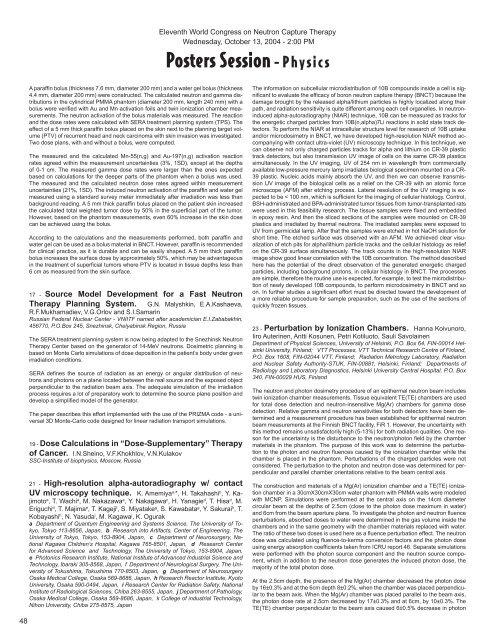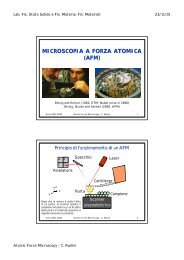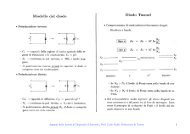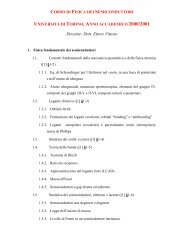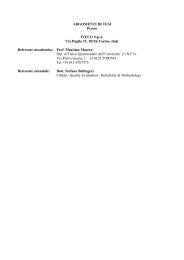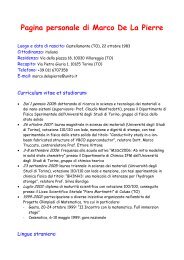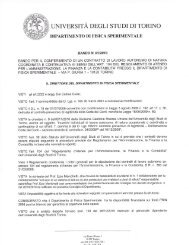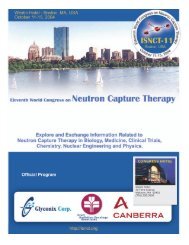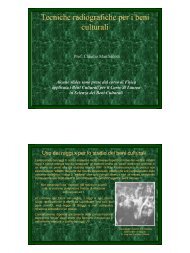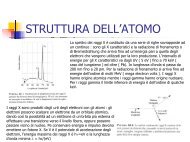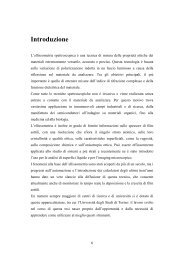You also want an ePaper? Increase the reach of your titles
YUMPU automatically turns print PDFs into web optimized ePapers that Google loves.
Eleventh World Congress on Neutron Capture TherapyWednesday, October 13, 2004 - 2:00 PMPosters Session - P hy s i c s48A paraffin bolus (thickness 7.6 mm, diameter 200 mm) and a water gel bolus (thickness4.4 mm, diameter 200 mm) were constructed. The calculated neutron and gamma distributionsin the cylindrical PMMA phantom (diameter 200 mm, length 240 mm) with abolus were verified with Au and Mn activation foils and twin ionization chamber measurements.The neutron activation of the bolus materials was measured. The reactionand the dose rates were calculated with SERA treatment planning system (TPS). Theeffect of a 5 mm thick paraffin bolus placed on the skin next to the planning target volume(PTV) of recurrent head and neck carcinoma with skin invasion was investigated.Two dose plans, with and without a bolus, were computed.The measured and the calculated Mn-55(n,g) and Au-197(n,g) activation reactionrates agreed within the measurement uncertainties (3%, 1SD), except at the depthsof 0-1 cm. The measured gamma dose rates were larger than the ones expectedbased on calculations for the deeper parts of the phantom when a bolus was used.The measured and the calculated neutron dose rates agreed within measurementuncertainties (21%, 1SD). The induced neutron activation of the paraffin and water gelmeasured using a standard survey meter immediately after irradiation was less thanbackground reading. A 5 mm thick paraffin bolus placed on the patient skin increasedthe calculated total weighted tumor dose by 50% in the superficial part of the tumor.However, based on the phantom measurements, even 60% increase in the skin dosecan be achieved using the bolus.According to the calculations and the measurements performed, both paraffin andwater gel can be used as a bolus material in BNCT. However, paraffin is recommendedfor clinical practice, as it is durable and can be easily shaped. A 5 mm thick paraffinbolus increases the surface dose by approximately 50%, which may be advantageousin the treatment of superficial tumors where PTV is located in tissue depths less than6 cm as measured from the skin surface.17 - Source Model Development for a Fast NeutronTherapy Planning System. G.N. Malyshkin, E.A.Kashaeva,R.F.Mukhamadiev, V.G.Orlov and S.I.SamarinRussian Federal Nuclear Center - VNIITF named after academician E.I.Zababakhin,456770, P.O.Box 245, Snezhinsk, Chelyabinsk Region, RussiaThe SERA treatment planning system is now being adapted to the Snezhinsk NeutronTherapy Center based on the generator of 14-MeV neutrons. Dosimetric planning isbased on Monte Carlo simulations of dose deposition in the patient’s body under givenirradiation conditions.SERA defines the source of radiation as an energy or angular distribution of neutronsand photons on a plane located between the real source and the exposed objectperpendicular to the radiation beam axis. The adequate simulation of the irradiationprocess requires a lot of preparatory work to determine the source plane position anddevelop a simplified model of the generator.The paper describes this effort implemented with the use of the PRIZMA code - a universal3D Monte-Carlo code designed for linear radiation transport simulations.19 - Dose Calculations in “Dose-Supplementary” Therapyof Cancer. I.N.Sheino, V.F.Khokhlov, V.N.KulakovSSC-Institute of biophysics, Moscow, Russia21 - High-resolution alpha-autoradiography w/ contactUV microscopy technique. K. Amemiya a, *, H. Takahashi b , Y. Kajimotoa , T. Wachi a , M. Nakazawa a , Y. Nakagawa c , H. Yanagie d , T. Hisa d , M.Eriguchi d , T. Majima e , T. Kageji f , S. Miyatake g , S. Kawabata g , Y. Sakurai h , T.Kobayashi h , N. Yasuda i , M. Kagawa j , K. Oguraka Department of Quantum Engineering and Systems Science, The University of Tokyo,Tokyo 113-8656, Japan, b Research into Artifacts, Center of Engineering, TheUniversity of Tokyo, Tokyo, 153-8904, Japan, c Department of Neurosurgery, NationalKagawa Children’s Hospital, Kagawa 765-8501, Japan, d Research Centerfor Advanced Science and Technology, The University of Tokyo, 153-8904, Japan,e Photonics Research Institute, National Institute of Advanced Industrial Science andTechnology, Ibaraki 305-8568, Japan, f Department of Neurological Surgery, The Universityof Tokushima, Tokushima 770-8503, Japan, g Department of NeurosurgeryOsaka Medical College, Osaka 569-8686, Japan, h Research Reactor Institute, KyotoUniversity, Osaka 590-0494, Japan, i Research Center for Radiation Safety, NationalInstitute of Radiological Sciences, Chiba 263-8555, Japan, j Department of Pathology,Osaka Medical College, Osaka 569-8686, Japan, k College of industrial Technology,Nihon University, Chiba 275-8575, JapanThe information on subcellular microdistribution of 10B compounds inside a cell is significantto evaluate the efficacy of boron neutron capture therapy (BNCT) because thedamage brought by the released alpha/lithium particles is highly localized along theirpath, and radiation sensitivity is quite different among each cell organelles. In neutroninducedalpha-autoradiography (NIAR) technique, 10B can be measured as tracks forthe energetic charged particles from 10B(n,alpha)7Li reactions in solid state track detectors.To perform the NIAR at intracellular structure level for research of 10B uptakeand/or microdosimetry in BNCT, we have developed high-resolution NIAR method accompanyingwith contact ultra-violet (UV) microscopy technique. In this technique, wecan observe not only charged particles tracks for alpha and lithium on CR-39 plastictrack detectors, but also transmission UV image of cells on the same CR-39 plasticssimultaneously. In the UV imaging, UV of 254 nm in wavelength from commerciallyavailable low-pressure mercury lamp irradiates biological specimen mounted on a CR-39 plastic. Nucleic acids mainly absorb the UV, and then we can observe transmissionUV image of the biological cells as a relief on the CR-39 with an atomic forcemicroscope (AFM) after etching process. Lateral resolution of the UV imaging is expectedto be < 100 nm, which is sufficient for the imaging of cellular histology. Control,BSH-administrated and BPA-administrated tumor tissues from tumor-transplanted ratswere used in this feasibility research. The tissue samples were fixed and embeddedin epoxy resin. And then the sliced sections of the samples were mounted on CR-39plastics and irradiated by thermal neutrons. The irradiated samples were exposed toUV from germicidal lamp. After that the samples were etched in hot NaOH solution forshort time. The etched surface was observed with an AFM. We achieved clear visualizationof etch pits for alpha/lithium particle tracks and the cellular histology as reliefon the CR-39 surface simultaneously. The track counts in the high-resolution NIARimage show good linear correlation with the 10B concentration. The method describedhere has the potential of the direct observation of the generated energetic chargedparticles, including background protons, in cellular histology in BNCT. The processesare simple, therefore the routine use is expected, for example, to test the microdistributionof newly developed 10B compounds, to perform microdosimetry in BNCT and soon. In further studies a significant effort must be directed toward the development ofa more reliable procedure for sample preparation, such as the use of the sections ofquickly frozen tissues.23 - Perturbation by Ionization Chambers. Hanna Koivunoro,Iiro Auterinen, Antti Kosunen, Petri Kotiluoto, Sauli SavolainenDepartment of Physical Sciences, University of Helsinki, P.O. Box 64, FIN-00014 HelsinkiUniversity, Finland; VTT Processes, VTT Technical Research Centre of Finland,P.O. Box 1608, FIN-02044 VTT, Finland; Radiation Metrology Laboratory, Radiationand Nuclear Safety Authority-STUK, FIN-00881, Helsinki, Finland; Departments ofRadiology and Laboratory Diagnostics, Helsinki University Central Hospital, P.O. Box340, FIN-00029 HUS, FinlandThe neutron and photon dosimetry procedure of an epithermal neutron beam includestwin ionization chamber measurements. Tissue equivalent TE(TE) chambers are usedfor total dose detection and neutron-insensitive Mg(Ar) chambers for gamma dosedetection. Relative gamma and neutron sensitivities for both detectors have been determinedand a measurement procedure has been established for epithermal neutronbeam measurements at the Finnish BNCT facility, FiR 1. However, the uncertainty withthis method remains unsatisfactorily high (5-13%) for both radiation qualities. One reasonfor the uncertainty is the disturbance to the neutron/photon field by the chambermaterials in the phantom. The purpose of this work was to determine the perturbationto the photon and neutron fluences caused by the ionization chamber while thechamber is placed in the phantom. Perturbations of the charged particles were notconsidered. The perturbation to the photon and neutron dose was determined for perpendicularand parallel chamber orientations relative to the beam central axis.The construction and materials of a Mg(Ar) ionization chamber and a TE(TE) ionizationchamber in a 30cmX30cmX30cm water phantom with PMMA walls were modeledwith MCNP. Simulations were performed at the central axis on the 14cm diametercircular beam at the depths of 2.5cm (close to the photon dose maximum in water)and 6cm from the beam aperture plane. To investigate the photon and neutron fluenceperturbations, absorbed doses to water were determined in the gas volume inside thechambers and in the same geometry with the chamber materials replaced with water.The ratio of these two doses is used here as a fluence perturbation effect. The neutrondose was calculated using fluence-to-kerma conversion factors and the photon doseusing energy absorption coefficients taken from ICRU report 46. Separate simulationswere performed with the photon source component and the neutron source component,which in addition to the neutron dose generates the induced photon dose, themajority of the total photon dose.At the 2.5cm depth, the presence of the Mg(Ar) chamber decreased the photon doseby 16±0.3% and at the 6cm depth 8±0.2%, when the chamber was placed perpendicularto the beam axis. When the Mg(Ar) chamber was placed parallel to the beam axis,the photon dose rate at 2.5cm decreased by 17±0.3% and at 6cm, by 10±0.3%. TheTE(TE) chamber perpendicular to the beam axis caused 6±0.5% decrease in photon


